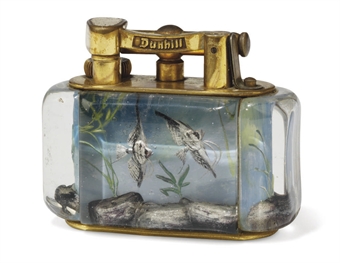
General speaking, the value of a lighter can be identified with the price someone is ready to pay for it. This thesis would be correct if only the market would be perfect (perfect information and perfect competition). Of course it is not. That is why collectors search for a better way of valuating their trophies. The simplest way is to look for the most up-to-date reference sources, like ended auctions or on-line guides.
Estimating the value of vintage lighters is a very complex process. One need to take into account several factors. The collectors value depends on:
The condition is one of the most fundamental issue for a collector. The most sought after are lighters in mint, pristine condition. The poorer the condition the less valuable is a lighter. It is often the case that the difference in pricing between a lighter in good condition and mint condition is 45-75%. It is worth to now that a mint cigarette lighter should include packaging, instructions, tags etc. To such lighters one refers to as "old new stock" (abbreviated ONS) or "mint in box" (abbreviated MIB).
2. AgeIn general, the older the lighter is the better. The main reason for it is scarcity and condition. It is much easier to find a Ronson Crown manufactured in 1952 than a Ronson Crown in the 1936 in excellent or mint condition. Furthermore the closer we are of the modern times the closer the mass production economy model.
3. Brand, model, country, style of origin etc.People collect everything. I am quite sure it would be impossible to find anything that comes to your mind that people do not collect. The only issue is many of them collects what. Regarding vintage cigarette lighters, collectors often specialize in collecting lighters that can be ascribed to a distinct category, like: German lighters, pocket lighters, figural lighters, lighters made by Evans, lighters made of silver, Art Deco lighters, wick table lighters, etc. The price of a lighter will than depend on the amount of collectors of its kind and fashions. Of course not only lighter collectors look for vintage lighters. You should take into consideration for instance people who are decorating their homes in one particular style, like Art Nouveau - they also will look for lighters in Art Nouveau style.
4. ScarcityThe most important factor for scarcity is the amount of lighters that were manufactured. One can also include the problem of wars in which a lot of goods is being destroyed, etc.
5. Quality and materials used for productionIt is quite obvious that a lighter made of gold is more valuable than the one made of silver. The same counts to fine craftsmanship.
OK, are that all factors? Of course not, but these are the most important factors that must be considered in you estimation.
The nominal value of a lighterDue to inflation the real value of money decreases. It refers to all currencies whether it is a dollar, euro or pound. In opposite to paper money gold does not lose its value due inflation. That is why it is the best mean in the analysis to compare prices and the purchase power of money long term. The nominal value often differs from the real market (collectors) value.
 Zippo case study:
Zippo case study: The market value for a Lady Bradford Zippo table lighter in 1950 (see advertisement from Life magazine from 06.05.1950) was $10. Actualizing the $10 price tag the nominal value today should be much higher. One once of gold in 1950 cost $40,25 and in 2008 it was near $872. It means in 1950 you could buy for one once of gold only 4 Lady Bradford Zippos! In terms of nominal value the very same Lady Bradford would cost today $218. But it does not - you can have it in mint condition at ebay for approx. $150. Can someone explain why? What happened here? What has changed in these years?
PS. The Zippo Lady Bradford was manufactured between 1949-1951. In addition Zippo started in 1997 (production ceased in 2002) a reissue of the classic Lady Bradford calling it Lady Barbara. It is still available for approx. $100.
PS2. The yearly gold prices since 1793 can be found
here.
 The Ronson 'American Classic' Table Lighter is a modern example of the table lighters manufactured these days. It was manufactured between the year 2001 and 2003 in China and distributed mainly by Ronson in Italy and the USA. This table lighter has a bronze antique finish with a floral pattern. The base is padded with black velvet.
The Ronson 'American Classic' Table Lighter is a modern example of the table lighters manufactured these days. It was manufactured between the year 2001 and 2003 in China and distributed mainly by Ronson in Italy and the USA. This table lighter has a bronze antique finish with a floral pattern. The base is padded with black velvet.






















 The Ronson Jubilee Set was
The Ronson Jubilee Set was
















